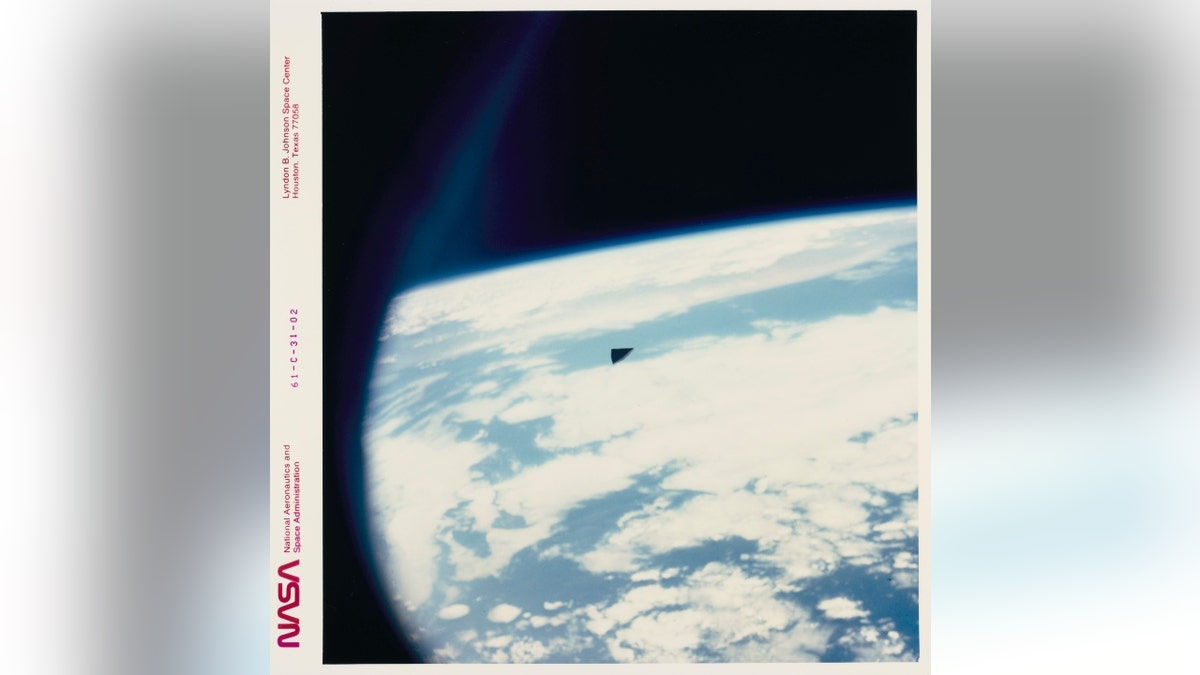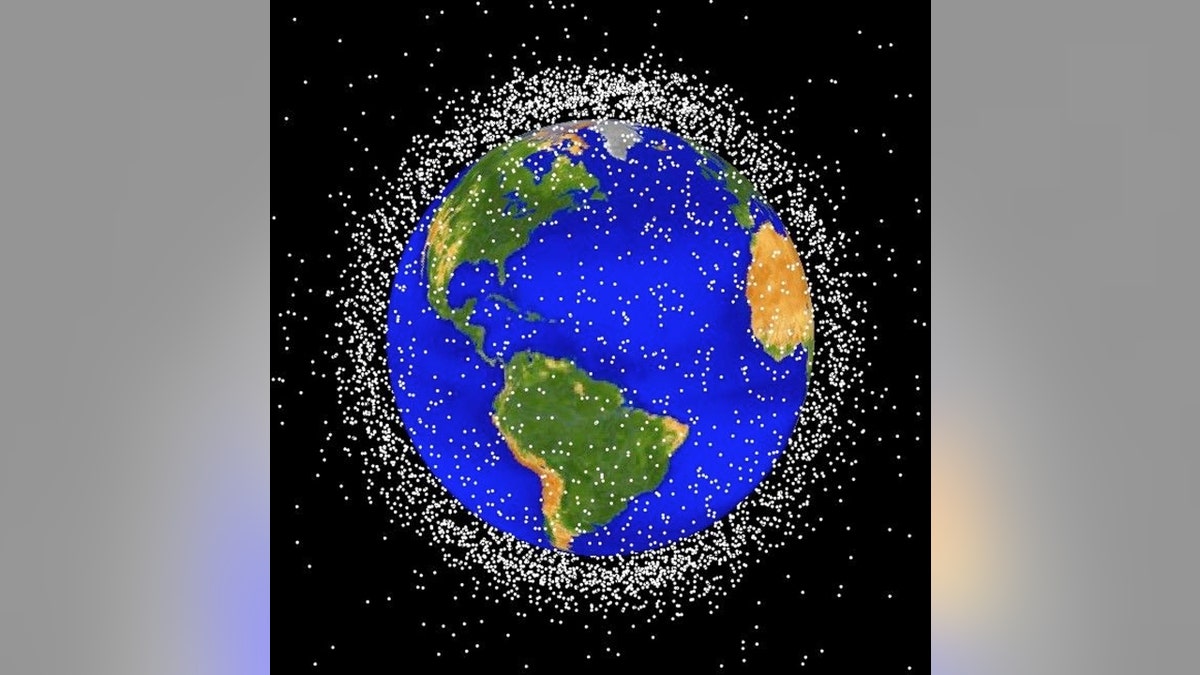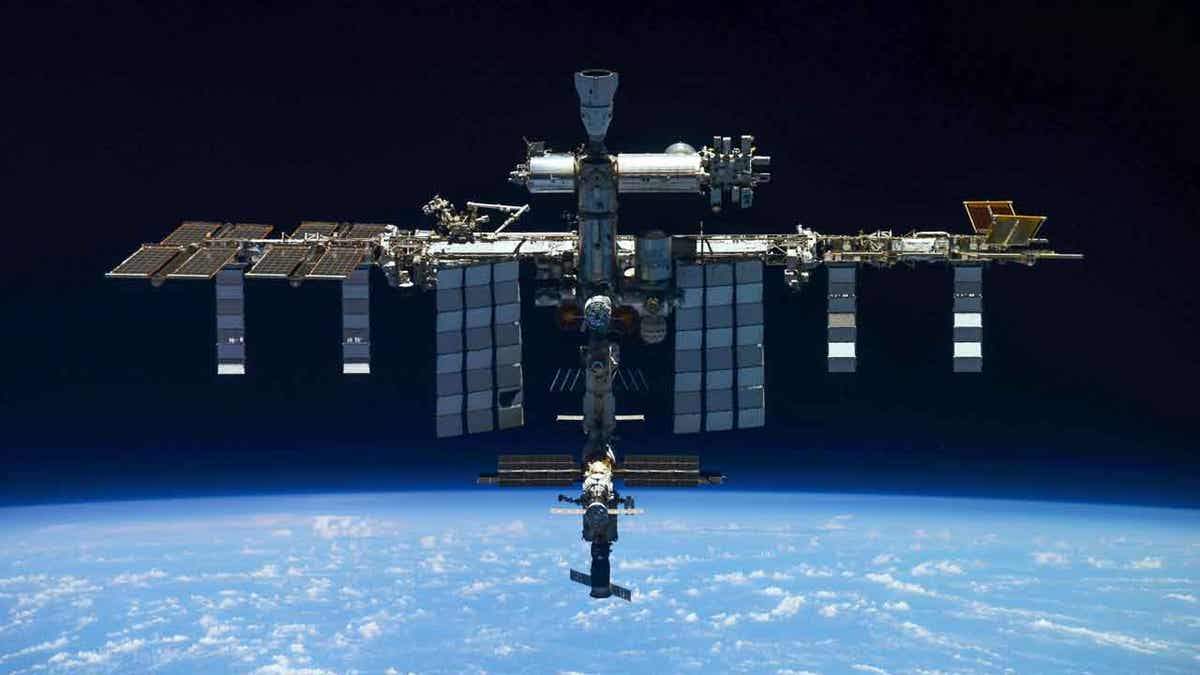Could hackers turn satellites into weapons?
Scholar William Akoto, who studies cyber conflict, says satellites could be a weapon
Two large pieces of space debris – an old rocket body and a military satellite – nearly collided on Friday.
LeoLabs, a private company that works to track satellites and objects in low Earth orbit, tweeted that, had the objects hit each other, the collision would have resulted in thousands of fragments that would have "persisted for decades."
"Too close for comfort... Two large, defunct objects in #LEO narrowly missed each other this morning — an SL-8 rocket body (16511) and Cosmos 2361 (25590) passed by one another at an altitude of 984 km," the company said.
The company said its radar tracking data helped to compute a miss distance of just 20 feet (6 meters), with a slight margin of error.
HUBBLE CAPTURES STUNNING STELLAR DUO IN ORION NEBULA 1,450 LIGHT-YEARS AWAY

A triangular piece of orbital debris (a section of thermal insulation tile) high above the Planet Earth as seen from the Space Shuttle Columbia during mission STS-61-C, 12th to 18th of January, 1986. ((Photo by Space Frontiers/Archive Photos/Hulton Archive/Getty Images))
The conjunction occurred in what LeoLabs called a "bad neighborhood."
"This region has significant debris-generating potential in #LEO due to a mix of breakup events and abandoned derelict objects," it tweeted, noting that the region is host to approximately 160 SL-8 rocket bodies deployed more than two decades ago.

GRAPHIC - (CIRCA 1989): This National Aeronautics and Space Administration (NASA) handout image shows a graphical representation of space debris in low Earth orbit. ( (Photo by NASA/Getty Images))
NASA SUCCESSFULLY TESTS NEW ENGINE FOR DEEP SPACE EXPLORATION
Between June and September of last year, the company highlighted that there were 1,400 high-PC conjunctions involving the rocket bodies alone.

In this handout photo released by Roscosmos State Space Corporation, a view of the International Space Station taken on March 30, 2022, by crew of Russian Soyuz MS-19 space ship after undocking from the station. ((Roscosmos State Space Corporation via AP, File))
"Why's this a big deal? We've identified this kind of collision — between two massive derelict objects — as a ‘worst-case scenario’ because it's largely out of our control and would likely result in a ripple effect of dangerous collisional encounters," LeoLabs explained.
CLICK HERE TO GET THE FOX NEWS APP
The company said it was crucial to focus on both collision avoidance and debris mitigation and remediation to combat space debris.
The International Space Station has had to maneuver to avoid such debris, and a tiny object that is possibly a piece of orbital debris is thought to be responsible for a leak aboard a Soyuz spacecraft currently docked at the station.





















